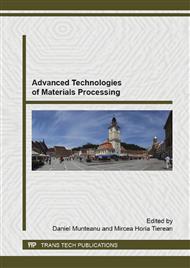p.338
p.347
p.353
p.364
p.372
p.378
p.384
p.390
p.394
Contamination of Steels in Petroleum Products
Abstract:
Most metallic constructions and equipment which come in contact with petroleum products are made of steel and are exploited at ambient temperature which can range between −50°C and +50°C in different regions of our planet. When metals and alloys are in contact with pure hydrocarbons (CnHm), they do not react with them. However, rust or different types of depositions can be observed in tanks and pipelines containing gasoline, naphtha, and gas oil. The complex phenomenon of contamination is described in this paper in order to demonstrate its importance, as the number of failures of steel components is growing every year. It is important to understand that the corrosion process proceeds at the interface of different phases. Water, H2S, corrosion products, ions, phenols, organic acids, and other organic sulphur-, oxygen- and nitrogen-containing compounds dissolved in petroleum products are the contaminants that are responsible for the further destruction of the steel components.
Info:
Periodical:
Pages:
378-383
Citation:
Online since:
October 2015
Authors:
Keywords:
Price:
Сopyright:
© 2015 Trans Tech Publications Ltd. All Rights Reserved
Share:
Citation:


